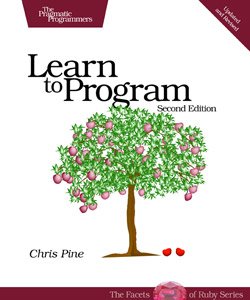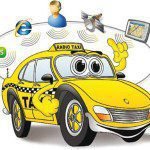If you’re a beginner in programming and want Ruby to be your first language, Learn to Program (pdf) – 2nd edition by Chris Pine is probably the best book for you. Targeting particularly to those with the desire to learn to program, this book teaches programming to absolute beginners from the very core, centering Ruby as its starter language.
It was Chris Pine who first discovered the programming language Ruby in 2001, and began using the language to program computer games. His widely popular beginner’s programing book – Learn to Program has been published in two editions in January 2006 and March 2009 respectively; the pdf version of the 2nd edition is available here for free download.
The pdf version of Learn to Program – 2nd edition can be downloaded for free from the link below. You can also buy the book from Amazon following the referral link.
Buy from Amazon: Learn to Program, Second Edition (The Facets of Ruby Series)
Book Review:
- Title: Learn to Program
- Author: Chris Pine
- Edition: 2nd
- Publisher: The Pragmatic Programmers
- Pages: 231
- Format: pdf
- Size: 1.2MB
Learn to Program is now fully updated and more engaging than the first edition. The author, Chris Pine, used the feedback from hundreds of students and teachers who read the first edition, and updated the content along with examples to use the latest stable version of the language.
The 2nd edition focuses on code that are more practical and based on real-world programming. This will no doubt immensely help beginners to become more familiar with Ruby fundamentals and the language’s common tools and techniques.
A relatively short book – 231 pages, but this book has everything in it to help a beginner understand what programming is and what Ruby is in particular. It starts with an introduction part exploring what programming is, programming languages, and the art of programming.
Learn to Program will get you started into the programming world with simple one-line programs to some basic mathematical program, before diving into fully structured, real programs.
The book is divided contains 15 chapters all of which are put together with immense clarity and comprehensible example; the writing is very engaging and enjoyable. Earlier chapters of the book cover topics such as Getting Started (on Mac, Windows, and Linux), Numbers (integer and float), Letters (strings), and variables and assignments.
Then the book delves into mixing these introductory chapters and explores more about methods. Flow Control and Arrays and Pointers cover topics such as looping, logic, array methods, etc. and these are combined with recursion and strings with examples.
Latter chapters of Learn to Program include Reading and Writing & Saving and Loading, New Classes of Objects, Creating New Classes & Changing Existing Ones, and Blocks and Procs. Possible solutions to the exercises in each chapters along with a comprehensive and useful index is available at the end portion of the book.
The exercises are included twice! The first series of answers to the exercises are “how you could do it”, where you’ll solve problems using the techniques you’ve learned up to that chapter. Next, you’ll find “how Chris Pine would do it” answers, where the author himself provides answers to the exercises using more advanced Ruby techniques.
Can you really learn to program from a 200+ page book? It certainly looks that way from our perusal. The author takes it very slowly, and explains everything in easy-to-understand terms.
—
Buy from Amazon: Learn to Program, Second Edition (The Facets of Ruby Series)
Learn to Program has over the years stood out as a very popular and engaging book for beginners to learn programming with Ruby as the implementation language. If you’ve never programmed before and want Ruby to be your first language, or you’re just seeking a refresher, this is a good book to start with.
Find more Ruby books/pdf here.







